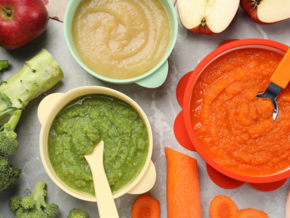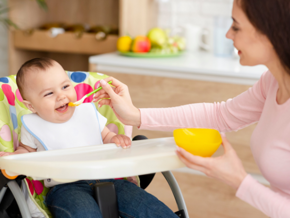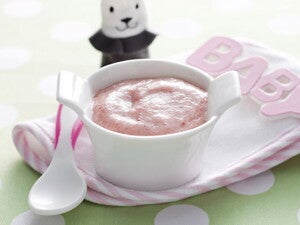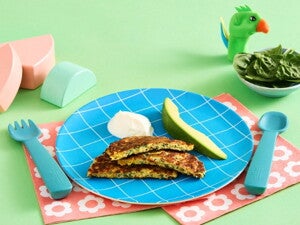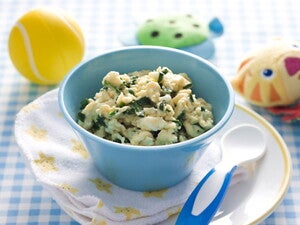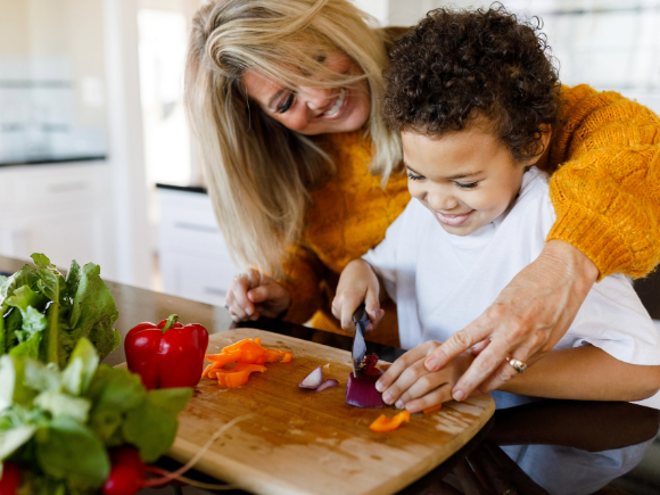
As parents, ensuring the health and safety of our families is a top priority and practicing food safety regularly at home helps minimize the risk of foodborne illnesses and keeps your little one healthy. However, we recognize that the life of a busy parent makes it tricky to incorporate additional rules and routines into daily life. The good news is that with a little effort and awareness, these safe food preparation practices can transform into habits that will provide a safe and nourishing mealtime environment for the whole family.
1. Clean your hands and your little ones
While most parents are familiar with good hygiene practices in the kitchen, you may find that you just need to be a little more diligent to ensure the utmost safety when cooking for babies and toddlers. Your baby’s immune system is less developed than yours, so they are more vulnerable to bacteria and food poisoning.
Here are some simple ways to maintain hygiene during food preparation:
- Always wash hands thoroughly with soap and water before cooking and after handling raw ingredients.
- Tie back long hair to prevent hair from falling into food.
- Consider using gloves when preparing food, especially if you have cuts on your hands, or long nails as this can be a hiding spot for dirt and bacteria.
- Ensure that whoever is cooking is in good health, and definitely avoid food preparation if experiencing diarrhoea or vomiting.
- Clean the baby’s eating space, including high chairs and utensils, before and after each meal.
- Wipe down surfaces and wash cutting boards in hot, soapy water after food preparation.
- Wash the baby’s hands and face before meals to remove any germs.
By adopting these practices, parents can create a safe and healthy mealtime environment for their children.
2. Keep foods adequately chilled
Maintaining fresh foods, especially meats and dairy products, at a temperature below 5 degrees Celsius is crucial for preventing the growth of harmful bacteria. Proper chilling slows down bacterial activity, keeping foods fresh for longer.
To ensure the right foods are chilled effectively, consider the following tips:
- Check the labels of food products and follow storage instructions.
- Regularly check and adjust your fridge temperature setting to maintain it below 5 degrees Celsius.
- Store perishable items in the fridge immediately after returning from the supermarket.
- Defrost foods in the fridge rather than at room temperature to minimise bacterial growth.
- Avoid overcrowding the fridge to allow for proper air circulation.
3. Cook or reheat foods correctly
Ensuring that foods, particularly meats, are cooked correctly is one of the most important rules of simple food safety. Undercooked meats can grow harmful bacteria such as salmonella, listeria, and E. coli, which can lead to severe food poisoning and health risks, especially for young children. Foods should be cooked or reheated to at least 60 degrees Celsius or higher to kill harmful pathogens.
Consider the following tips to help ensure foods are heated correctly:
- Use a food thermometer to check that the internal temperature reaches at least 60 degrees Celsius.
- Check that no red or pink remains in meats, ensuring they are fully cooked through.
- Ensure microwaved meals are steaming and hot throughout, with no cold spots.
- Allow cooked foods to rest for a few minutes before serving to ensure even heat distribution.
- Stir meals thoroughly when reheating to promote even heating and eliminate cold spots.
- Never reheat food or meals that have already been reheated once before.
4. Keep utensils and the food prep space clean
Even if your hands are clean and your food is fresh, contamination can still occur from an unclean workspace or utensils. A clean food preparation area is essential for ensuring the safety of your meals. Bacteria can thrive on surfaces and tools that have not been properly cleaned, leading to cross-contamination and potential foodborne illnesses.
The following tips can help you practice good food hygiene:
- Use clean cutting boards and knives for each of the different food groups. Prepare raw meats separately from other foods to avoid cross-contamination.
- Wash utensils and cutting boards in hot, soapy water after each use, and allow to dry completely.
- Regularly sanitise countertops and food prep surfaces.
- Store utensils in a clean, designated area to prevent cross-contamination.
5. Check use-by and best-before labels
The ‘use-by’ date and ‘best-before’ date are both extremely important to look for on a label, and understanding the difference between them can further enhance your simple food safety procedures.
The use-by date refers to safety, indicating the last day the food is safe to consume. Consuming food past this date can pose health risks, so it's important to pay attention to this date on the label. In contrast, the best-before date relates to quality, suggesting when the food might start to lose its freshness or flavour, but it may still be safe to eat after this date.
To minimise food wastage, take proactive steps when products approach their use-by date. Freezing food in an airtight container is an excellent way to preserve its freshness for longer. By checking labels and managing your food wisely, you can keep your family safe and reduce waste in the process.
6. Adapt food for your baby
When your baby is ready to start solid food at around 6 months of age, understanding what food textures are appropriate for your little one is essential for their safety. Introducing the right textures helps prevent choking and encourages healthy eating habits as they grow. The Australian infant feeding guidelines recommend starting with smooth purees and gradually progress to lumpier textures as your baby becomes more comfortable with chewing.
Some foods that the rest of the family are eating that don’t have added sugar or salt are easily adapted, which will save you time cooking separate dishes. Other meals or favourite recipes may not be so readily adapted. In those cases, you may find a good quality electric blender will puree or break down the food to an appropriate texture for your baby. Remember to allow your baby’s food to cool first before blending or cutting into smaller pieces if required.
Watch for foods that pose a choking risk:
- Hard, round foods, such as whole nuts, raw fruit and vegetables like apples and carrots;
- Fibrous or tough foods, such as steak and chicken;
- Foods with skins or shells, including unpeeled fruit, seeds, and popcorn; and
- Round-shaped foods, such as grapes, hot dogs, and sausages;
Other foods that are harmful for babies and should not be consumed, include:
- Honey (for babies under 12 months) - honey can contain the bacteria that may cause infant botulism;
- Raw or runny eggs because they may contain bacteria that can cause serious illnesses;
- Dairy products made from raw unpasteurised milk, because they may contain bacteria that can cause serious illnesses;
In addition to texture, other important considerations for your baby's safety at mealtime include ensuring food is served at an appropriate temperature to prevent burns, using age-appropriate utensils that are easy for little hands to grasp and that are soft on the mouth, and being mindful of allergens. Always introduce new foods one at a time and watch for any adverse reactions.
7. Additional food safety tips to remember
Always remember that taking extra care when preparing, cooking, and storing your baby’s food is so you can provide as much nutrition as possible in the food you offer, and that the foods are safe for their developmental stage of eating. There is no need for added sugar or salt. There is also no need for soft drinks, tea or caffeinated drinks. At each meal, offer clean, fresh water as a drink. Always check the packaging and avoid food from dented, rusted, bulging, or leaking cans or jars, or swelling or leaking plastic pouches.
Frequently asked questions about food safety rules
Why are food safety rules important?
Food safety rules are crucial for protecting your family's health, especially young children who are more vulnerable to foodborne illnesses. By being diligent in providing clean food, practicing proper food handling and ensuring sterilized preparation areas, you can reduce the risk of contamination and promote safe and healthy eating habits for everyone in your household.
Is food safety more important when you have a baby?
Food safety is always important. When you have a baby, you need to be diligent with food safety as their developing immune systems make them more susceptible to foodborne illnesses. Adhering to strict food safety practices helps prevent contamination and ensures that the foods you provide are safe, promoting healthy growth and development for your little one.
When should food safety procedures be used?
Food safety procedures should be used at all stages of food handling, including shopping, storing, preparing, cooking, and serving. Always practice good hygiene by washing hands and surfaces, checking expiration dates, and ensuring foods are cooked and cooled to safe temperatures. Consistently applying these simple food safety procedures helps protect your family's health.
When should my children start practicing food safety?
Children can start practicing food safety as early as toddler age. Begin by teaching them simple hygiene habits like washing hands before meals. As they grow, involve them in age-appropriate kitchen tasks, reinforcing the importance of cleanliness, proper food handling, and understanding safe food practices to promote lifelong habits.
Sources
- Australia & New Zealand Food Standards Website. Accessed at Food Standards Australia
- Health Direct Website. Accessed at Food Safety - Health Direct

